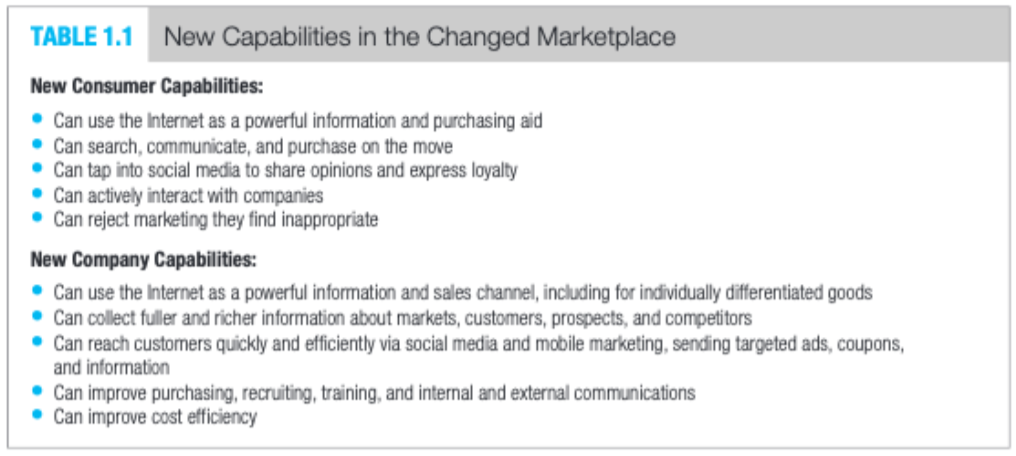A Dramatically Changed Marketplace
According to the book
The three recent forces —technology, globalization, and social responsibility— have dramatically changed the marketplace and provided both consumers and companies with new capabilities, as shown in Table 1.1.

One of the reasons consumers have more choices is that channels of distribution have changed. Store-based retailers face competition from catalog houses; direct-mail firms; news-paper, magazine, and TV direct-to-customer ads; home shopping TV; and e-commerce.
In response, entrepreneurial retailers are building entertainment into their stores with coffee bars, demonstrations, and performances, marketing an “experience” rather than a product assortment.
Early dot-coms such as Amazon.com successfully created disintermediation in the delivery of products and services by intervening in the traditional flow of goods. Now traditional companies are engaging in reintermediation and becoming “brick-and-click” retailers, adding online services to their offerings.
While globalization has created intense competition among domestic and foreign brands, the rise of private labels (marketed by powerful retailers) and mega-brands (and brands extended into related product categories) plus a trend toward deregulation and privatization have also increased competition.
Many countries have deregulated industries to create greater competition and growth opportunities. In the United States, laws restricting financial services, telecommunications, and electric utilities have all been loosened in the spirit of greater competition.
Meanwhile, many countries have converted public companies to private ownership and management to increase efficiency, which also adds to the competitive pressure.
Marketers are increasingly asked to justify their investments in financial and profitability terms as well as in terms of building the brand and growing the customer base.
Organizations recognize that much of their market value comes from:
- intangible assets,
- particularly brands,
- customer base,
- employees,
- distributor
- and supplier relations,
- and intellectual capital.
They are thus applying more metrics:
- brand equity,
- customer lifetime value,
- return on marketing investment;
to understand and measure their marketing and business performance and a broader variety of financial measures to assess the direct and indirect value their marketing efforts create.

